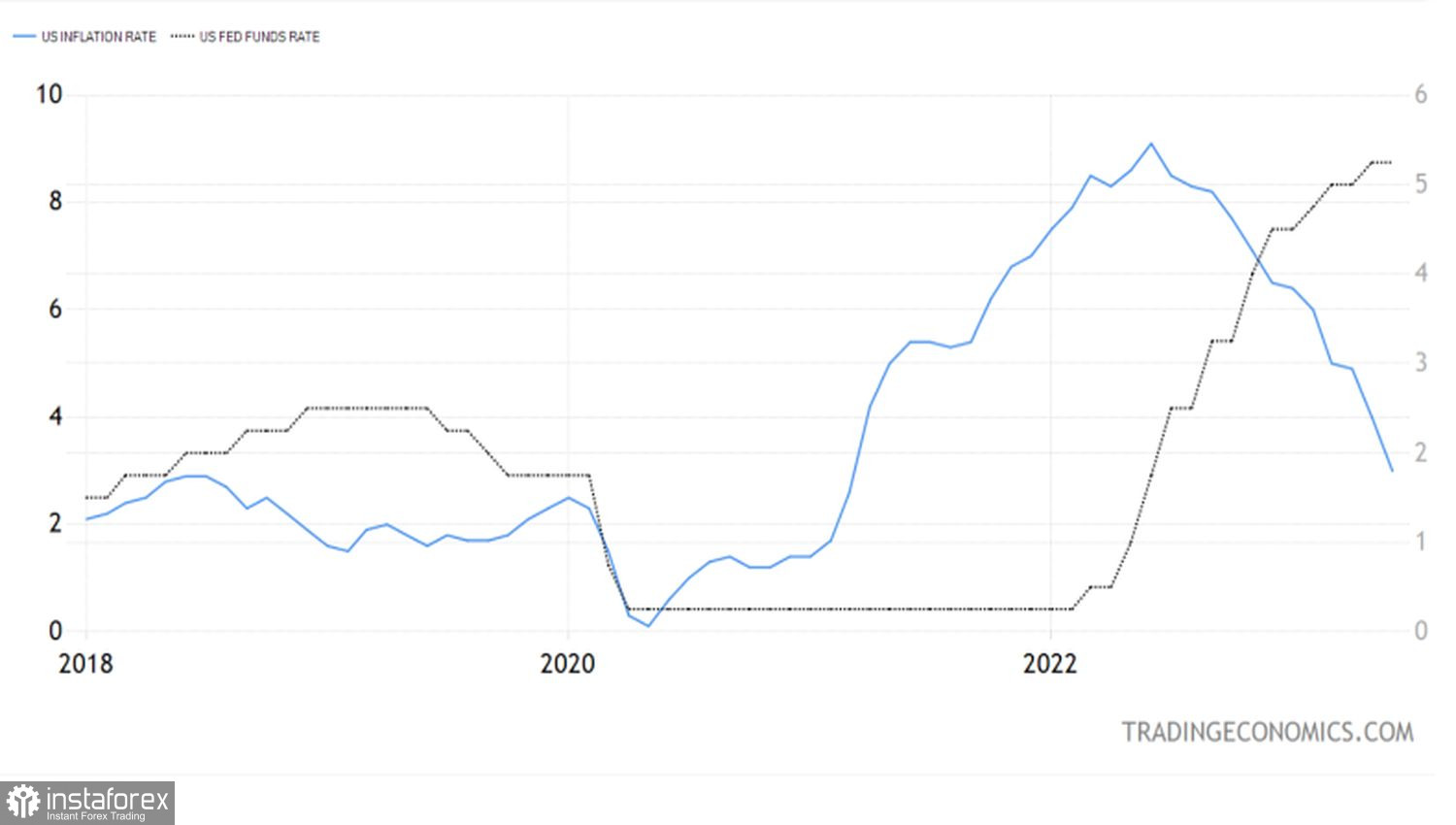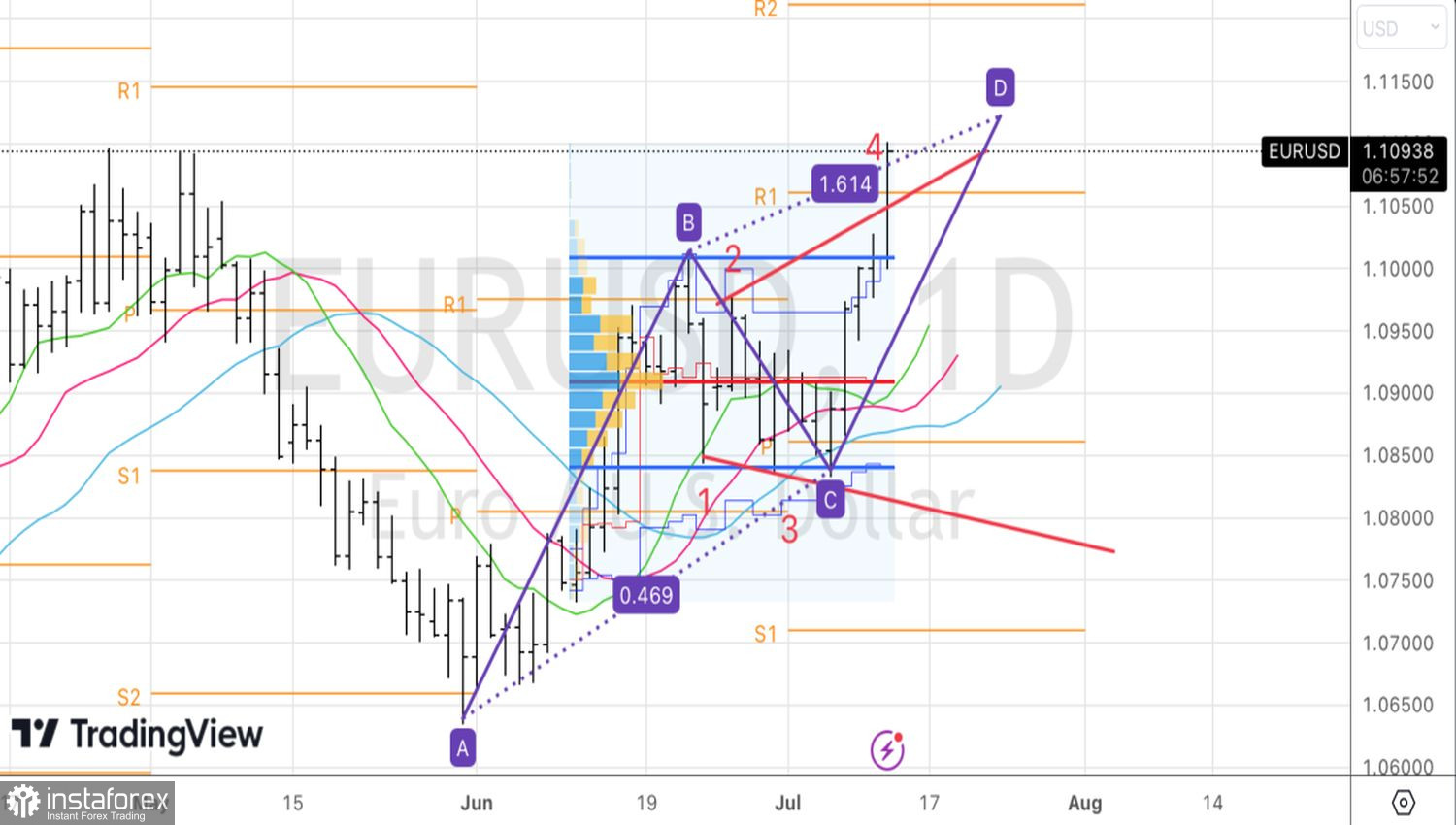There is no better music for the soul than the feeling of being right. Over the past several weeks, financial markets have been going against the Federal Reserve. They claimed that the FOMC's June forecast of two federal funds rate hikes was erroneous. Advocates of this theory were buying EUR/USD. Conversely, investors who believed unconditionally in the Central Bank were selling the pair. The American inflation report was expected to settle who was right. It turned out to be a real revelation for the markets.
Consumer prices in June slowed to 3% annually and 0.2% monthly, while core inflation to 4.8% and 0.2%, respectively. All these figures were below Bloomberg experts' forecasts, which reinforced rumors about the end of the Federal Reserve's monetary restriction cycle and sunk the U.S. dollar. Indeed, if inflation is moving so quickly towards the 2% target, why raise the federal funds rate?
Dynamics of inflation in the U.S. and the Fed's rate

Federal Reserve Bank of Atlanta President Raphael Bostic have said in a speech that prices could return to the Central Bank's target without increasing borrowing costs. Despite the fact that the futures market is still confident in their rise to 5.5% in July, derivatives have lowered the probability of continuing the rally to 5.75% and above from more than 30% to 23%. This circumstance allowed Treasury bond yields to crash and U.S. stock indices to continue their upward movement. Such a market environment creates ideal conditions for EUR/USD. It is no wonder that the main currency pair has come within arm's reach of the 1.11 mark.
The main question worrying investors now is whether there will be a pause in the Fed's monetary policy tightening after July, or can we talk about the end of the cycle? According to the former head of the New York Fed, William Dudley, we need to see a slowdown in average wage growth. If the labor market remains too tight, inflation will not be able to return to 2%.
I do not rule out that in light of significant inflation slowdown, a flood of criticism will be directed at the Federal Reserve. Politicians will criticize the Central Bank for slowing GDP growth, for bringing the U.S. economy to recession. However, let's recall the 1970s. Then, the Central Bank was also accused of overdoing it. And then they accused it of a political mistake. History repeats itself, and the Fed does not want to make the same mistakes. It will likely maintain its "hawkish" rhetoric but will only raise borrowing costs to 5.5%.

However, speeches by individual FOMC officials about the proximity of the end of the monetary restriction cycle, about the need to stop, suggest a possible split in the ranks of the Committee. This could be another ace in the hole for the "bulls" on EUR/USD. The situation in the pair has turned upside down, and we need to move away from previous dogmas.
Technically, on the daily chart, there is an AB=CD harmonic trading pattern. Its target at 161.8% is at the 1.112 mark. We switch to the strategy of buying EUR/USD on pullbacks. As long as the pair holds above 1.106, the situation is under the "bulls" control.





















